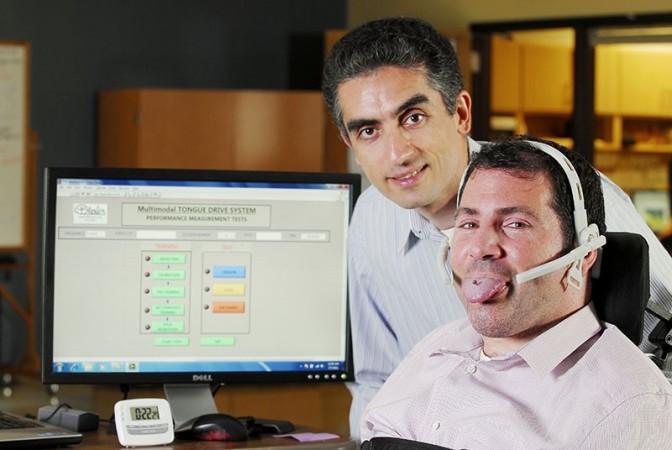
A simple tongue movement will enable a paralysed person to move his/her wheelchair.
Scientists have developed a technology that enables a paralysed person to move around freely in wheelchair or use computers by merely moving the tongue.
Interestingly, the wireless Tongue Drive System can help execute commands faster than the sip-and-puff system, the technology that is currently available to assist patients control wheelchairs. Sip-and-puff uses air pressure inhaling or exhaling into a straw to control a wheelchair.
The latest innovation works on a magnetic stud pierced into the tongue and a headset. Sensors in the stud captures tongue position and transmits details to the headset, which sorts out command and performs accordingly. The headset can perform up to six commands at a time.
The ground-breaking invention comes from a team of scientists at the Georgia Institute of Technology in the US.
Effectiveness of the new technology was tested on a group of tetraplegia patients (people who were paralyzed either by injury or illness) and another group of healthy people. Principal investigator Maysam Ghovanloo and his team asked healthy people to perform tasks using either the Tongue Drive System or a keyboard or mouse. The experiment involved clicking a target on the computer screen. During the clicking process, researchers measured the total information transferred from the subject's brain to the computer.
In another experiment, they found that the tetraplegia patients were able to perform various commands faster using the tongue stud than the sip-and-puff system, despite the fact that many of the participants were using the sip-and-puff system for many years. Interestingly, the Tongue Drive System was equally accurate as the sip-and-puff System.
"The Tongue Drive System is a novel technology that empowers people with disability to achieve maximum independence at home and in the community by enabling them to drive a power wheelchair and control their environment in a smoother and more intuitive way," co-lead investigator Elliot Roth, said in a statement. "The opportunity to use this high-tech innovation to improve the quality of life among people with mobility limitations is very exciting."
Though it will take some more years before the innovation reaches markets, the new technology has already gained popularity among patients. "The Tongue Drive System will greatly increase my quality of life when I can start using it everywhere I go," Jason DiSanto, who has been paralysed from the neck down after a diving accident in 2009, said. "With the sip-and-puff system, there is always a straw in front of my face. With the Tongue Drive, people can see you, not just your adaptive equipment."
The findings have been reported in the journal Science Translational Medicine.

















